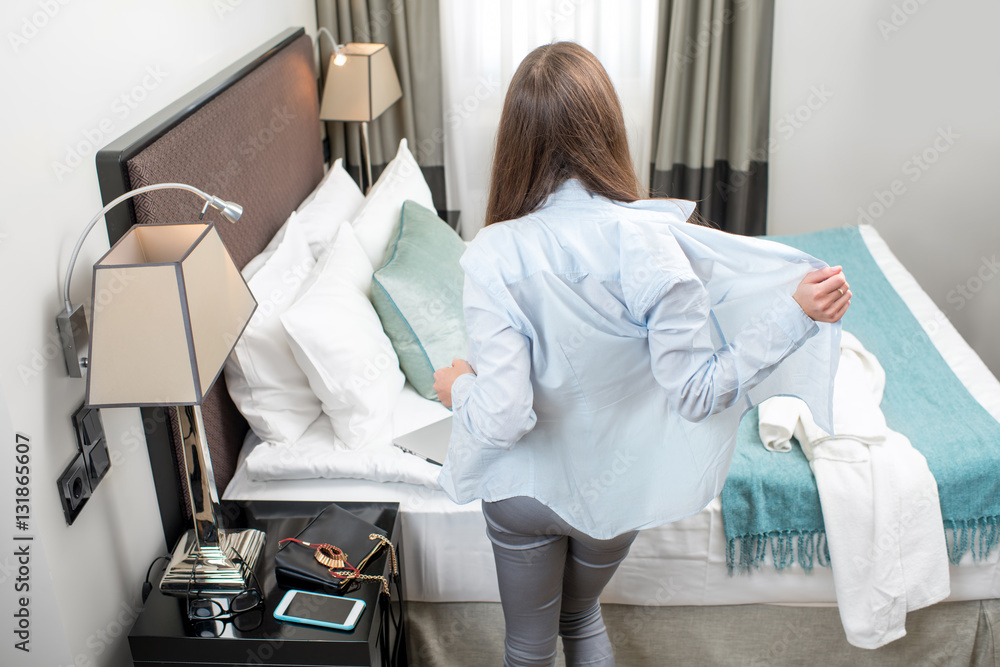Navigating Undressing At Work: Practical Tips For Workplace Attire Changes
Workplaces, you know, are places where we spend a lot of our time, and often, what we wear really matters. Sometimes, the clothes we start our day in just aren't quite right for everything we need to do. This can mean needing to change your clothes while you are there, perhaps for comfort or maybe for a very specific task. It's a common enough thing, really, but it also brings up some questions about how to do it respectfully and properly.
Thinking about changing clothes at work, or even just needing to adjust your attire, involves a lot more than just finding a quiet spot. It touches on things like personal privacy, professional expectations, and the rules your workplace might have. It's about making sure everyone feels comfortable and that the work environment stays respectful. So, you might wonder, what's the best way to handle these moments?
This article aims to explore the practical side of changing clothes while you are at work. We will look at common reasons why people might need to change, discuss the importance of privacy, and, you know, offer some friendly advice on how to keep things professional. It’s all about helping you understand the best practices for managing your wardrobe changes in a work setting, ensuring you are always ready for whatever the day brings.
- Bill Hemmer Wife
- V3 Vegamovies.bitbucket.io
- Teach Me First Comic Free
- Vegamovies Nl 20
- Mp4moviez Web Series
Table of Contents
- Why Change Clothes at Work? Common Reasons
- Finding the Right Space: Privacy and Facilities
- Workplace Policies and Professionalism
- Practical Tips for Changing at Work
- Frequently Asked Questions About Changing Clothes at Work
Why Change Clothes at Work? Common Reasons
There are many everyday situations that might call for a change of clothes during your workday, you know. It’s not always about a big event, but rather, often, small, practical needs. For instance, many jobs require a uniform for safety or just for the job’s specific look. Think about nurses, construction workers, or even people in retail; they often arrive in their regular clothes and then switch into a uniform.
Another very common reason is physical activity. Lots of workplaces have gyms now, or maybe you like to go for a run during your lunch break, or perhaps cycle to work. After a workout, you really need to change into something fresh and more suitable for sitting at a desk. So, that’s a very practical reason to change your clothes at work.
Sometimes, it’s just about comfort, or perhaps a sudden need. You might spill coffee on your shirt, or, you know, maybe the weather changes unexpectedly and your clothes just aren't right anymore. Having a spare set of clothes at work can be a real lifesaver for these kinds of moments. It helps you stay comfortable and, you know, presentable throughout your day, which is rather important.
Then there are special events. If you have a formal presentation or a client meeting later in the day, but your morning was spent on a more casual task, you might want to switch into something more business-appropriate. It’s about being ready for different parts of your job, which, you know, can vary quite a bit.
Finding the Right Space: Privacy and Facilities
Finding an appropriate spot to change clothes at work is, you know, pretty important for everyone involved. It’s not just about your comfort, but also about respecting your colleagues and the general professional atmosphere. Many workplaces, especially larger ones, will have dedicated areas for this purpose, which is good.
Locker rooms are, like, the most obvious choice for changing, especially in places with gyms or uniforms. These spaces are specifically made for changing, and they usually offer a good level of privacy. They often have individual lockers, which is great for keeping your belongings safe while you are, you know, getting ready for your next task or activity.
If there isn't a dedicated locker room, a private restroom stall can often work. This is a common solution in many offices. It offers a closed space where you can change without feeling, you know, exposed. Just be mindful of others who might need to use the restroom, and try to be quick and efficient so you don't hold up the line, which can happen.
Some workplaces might have single-stall restrooms or even small, designated changing rooms that aren't full locker rooms. These are also good options because they offer a private setting. It’s always a good idea to check if your workplace has such facilities and, you know, where they are located. Knowing your options helps a lot.
Changing at your desk or in an open office area is, generally speaking, not a good idea at all. It can make others feel uncomfortable, and it really doesn't look very professional. Even if you think no one is watching, it’s just not the right place for it. Maintaining a sense of decorum in shared spaces is, you know, very important for everyone.
Workplace Policies and Professionalism
Most workplaces have some kind of dress code or policy that, you know, guides what people wear and how they present themselves. These policies might also touch upon changing clothes at work, even if it's not explicitly stated. It’s always a good idea to be familiar with your company’s guidelines, which can usually be found in an employee handbook or, you know, on the company intranet.
Professionalism is, you know, a very big part of working life. This means maintaining a respectful attitude and appearance, even when you are changing clothes. It’s about being discreet and making sure your actions don’t cause any discomfort for others. For instance, making sure doors are closed, or using a designated changing area, shows respect for your colleagues’ space and privacy.
If you are unsure about where or how to change, or if there are specific rules, it's always better to ask. You could, for example, talk to your manager or someone in the human resources department. They can give you clear guidance and help you understand what is, you know, acceptable in your particular workplace. Asking questions shows you care about doing things the right way.
Sometimes, a workplace might have specific rules about uniforms or protective gear. These rules are often there for safety or branding reasons. In these cases, it’s really important to follow them precisely. Changing into or out of these items might have a specific process or designated area, and, you know, adhering to that is part of your job.
Think about the overall atmosphere of your workplace. Is it very formal or more relaxed? This can give you clues about how changing clothes might be viewed. Even in a relaxed environment, maintaining a certain level of discretion is, you know, still very much appreciated by everyone around you. It’s about common courtesy, really.
Practical Tips for Changing at Work
When you need to change clothes at work, having a little plan can make things much smoother, you know. It helps you be efficient and, frankly, keeps things from getting awkward. One simple tip is to always have your next outfit ready to go. This means having it folded neatly in a bag, so you can just grab it and go to your changing spot.
Always use a private space, like a locker room or a single-stall restroom. As a matter of fact, avoiding changing in open areas, like your desk or a shared office space, is a very important rule to follow. It keeps things professional and, you know, comfortable for everyone around you. Privacy is key in these situations, obviously.
Be quick and efficient when you change. This is especially true if you are using a shared space, like a restroom. You want to make sure you are not taking up the space for too long, especially during busy times. Being mindful of others who might be waiting is, you know, just good etiquette, really.
Keep your changing routine clean and tidy. Don’t leave clothes or personal items lying around in shared spaces. Always put your dirty clothes in a bag, and take them with you or put them in your locker. A clean space is, you know, a respectful space for everyone who uses it, which is rather important.
Consider bringing a small, discreet bag for your change of clothes. A gym bag or a tote that blends in with your usual work items is often a good choice. This way, you’re not carrying around anything too bulky or, you know, drawing unnecessary attention to your need to change. It’s about being prepared without making a fuss.
If you find yourself needing to change often for a specific part of your job, like, say, if you are a fitness instructor who also does office work, talk to your manager. There might be specific arrangements or facilities that can make your routine easier and, you know, more convenient. Communication can often solve these little logistical puzzles.
Always remember that maintaining a professional image extends to how you manage your personal needs at work. Being thoughtful about where and how you change your clothes contributes to a respectful and harmonious workplace environment. It’s a small detail, but, you know, it really does add up to a big difference in how comfortable everyone feels.
Frequently Asked Questions About Changing Clothes at Work
Is it okay to change clothes at my desk?
No, it's generally not a good idea to change clothes at your desk or in any open office area. This can make your colleagues feel uncomfortable and it doesn't really look very professional. It's much better to use a private space, like a locker room or a restroom stall, which, you know, is designed for such things.
What are common workplace changing room policies?
Workplace changing room policies often focus on privacy, cleanliness, and respect for others. They usually state that these areas are for changing only, and that personal belongings should be stored securely in lockers. Some policies might also mention not leaving items in the changing area or, you know, keeping noise levels down. It’s all about shared space etiquette, really.
How can I maintain privacy when changing at work?
To maintain privacy, always use designated changing rooms, locker rooms, or single-stall restrooms. Make sure doors are closed and locked, if possible. You should also try to be quick and efficient to minimize your time in the changing area. Carrying your clothes in a discreet bag also helps, you know, keep things private until you are in the right spot.
For more general guidance on workplace conduct and policies, you could, perhaps, look at resources from organizations that focus on employment standards and best practices, like the U.S. Department of Labor, for example. Learn more about on our site, and link to this page .

Young tired business woman undressing after working day in the hotel

Sexy secretary undressing boss in office Stock Photo | Adobe Stock

Young tired business woman undressing after working day in the hotel